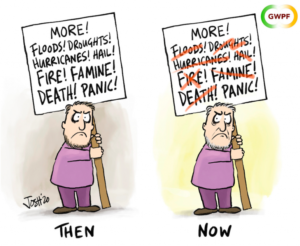by GWPF/Reuters, July 14, 2020
The European Union remains deeply divided over plans to increase its CO2 emissions targets, with East European ministers refusing to commit to bigger cuts.
The EU has agreed to unilaterally cut greenhouse gas emissions by 40% by 2030. This target has been criticised by climate activists who claim that more radical cuts are needed to prevent ‘catastrophic’ climate change.
Responding to this campaign, the European Commission plans to publish an impact assessment of the additional cost of a revised CO2 target to 50% or 55% by 2030. The EU would then need to agree a new target with member states and lawmakers.
According to Reuters, a meeting of environment ministers from the EU’s 27 member states failed to find agree on whether the target should be raised at all.
“Some are sceptical,” German Environment Minister Svenja Schulze said after the meeting.
On Monday, Poland, Slovakia, Bulgaria, Romania, Czech Republic and Hungary wrote to the European Commission, announcing that they will not support a new CO2 target until they have seen the Commission’s economic impact assessment.


